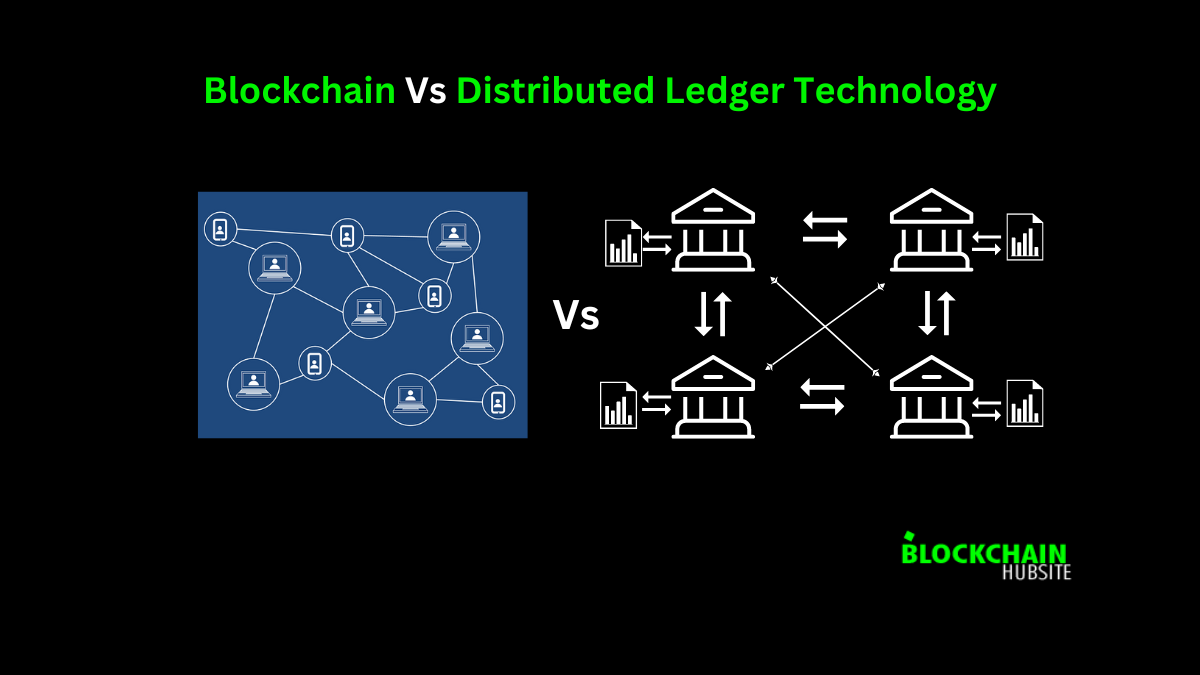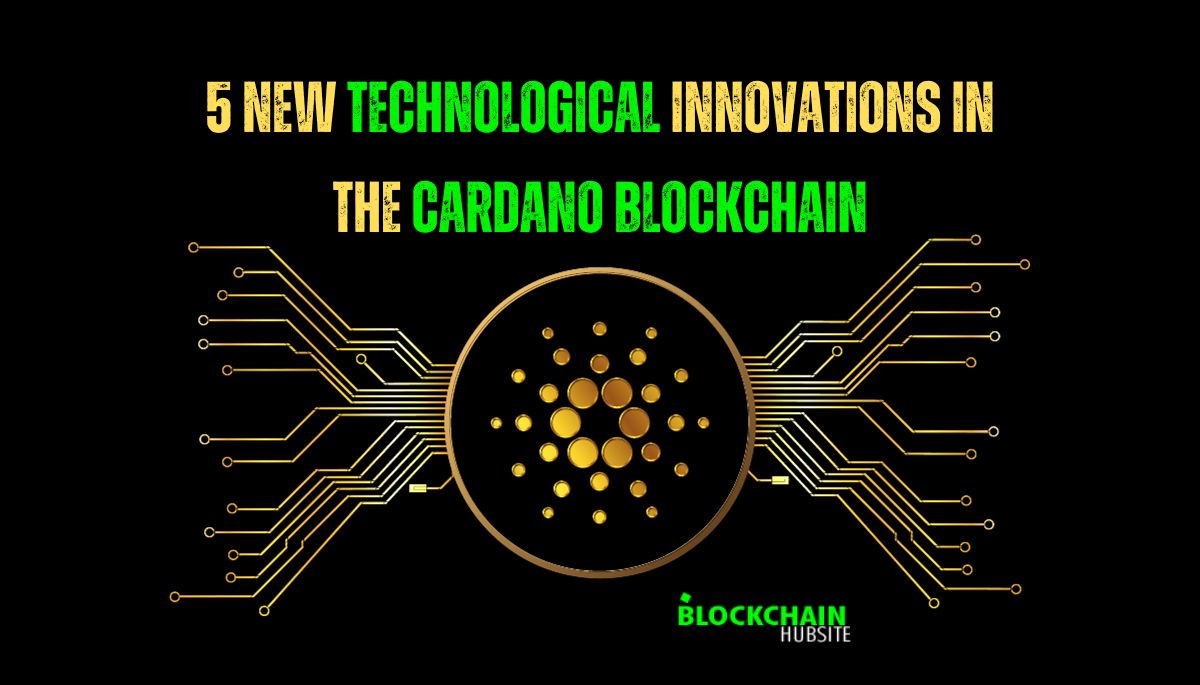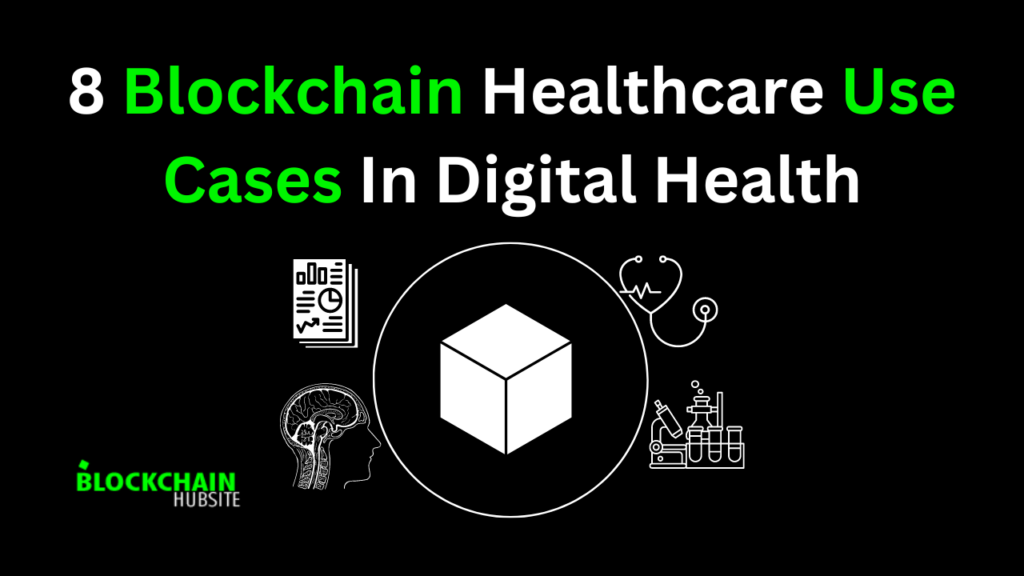
Table of Contents
The terminology “blockchain” and “distributed ledger technology” (DLT) are often used interchangeably; nevertheless, they do not refer to the same thing. DLT can refer to different forms of decentralized systems besides blockchain.
Although blockchain technology is a distributed ledger, not all DLTs may be considered blockchains. Blockchain is a distributed ledger that employs cryptography to make transactions immutable and transparent.
DLT is a broader category of decentralized technologies that can use several data structures and consensus procedures to produce a shared, tamper-proof ledger, like blockchain.
Although the two technologies have certain similarities, they also differ significantly. This blog will discuss the critical differences between Blockchain and DLT.
What Is Blockchain?
A “blockchain” is a type of data structure that is used in some distributed ledgers. It stores and sends data in ” blocks ” packages linked together in a digital “chain.” Blockchains use cryptographic and algorithmic techniques to preserve and synchronize data across a network securely.
What Is A Distributed Ledger?

Distributed ledgers are databases used in a decentralized manner over a network and in different places. One can use a distributed ledger that is globally distributed and managed by a central authority to keep track of financial transactions. So, distributed ledgers are kept and reorganized by many people and institutions in different places.
How Distributed Ledgers Work?

Distributed ledgers are kept, reorganized, and handled by individuals called nodes. Every node contributes to the database creation process in its way. Each node in the network processes all of the transactions that occur there and draws its conclusion about the growth of the database.
Voting takes place based on the transaction to determine whether or not the completed modifications should be saved to the database. The new transaction is added to the database if at least 51% of the nodes vote in favour. After that, the nodes update the database versions so that all the devices or nodes run the same. The blockchain gets a new block with the modified transaction data.
In a Proof-of-Work blockchain, the nodes are also referred to as miners. A reward is given to the miner who successfully adds a new transaction to a block. It necessitates the constant availability of computing resources. Miners are the ones who are tasked with calculating the new block’s cryptographic hash. The reward goes to the miner, who correctly locates the hash first.
Those miners that devote more processing power to finding the hash will have a higher chance of success. But, when more and more blocks are generated, it gets more challenging to determine successive hash scales. The objective is to maintain a constant rate at which the blocks are produced.
How Are Blockchain And Distributed Ledger Different?

- Distributed ledger technology
No single entity is responsible for storing or validating the data in a distributed ledger system. This information is then dispersed throughout a network of computers. Since the ledger is stored in identical form on every node, it is decentralized. In this network, each node functions independently of the others. Each node can make its changes thanks to distributed ledger technology. After each update, the nodes vote on whether or not they agree with the result. The process of reaching an agreement through voting is termed consensus.
Although distributed ledger technology (which may sound the same as blockchain) accomplishes the same goal of lowering the cost of trust, it is not blockchain. The implementer of distributed ledger technology can significantly influence the technology’s deployment.
Distributed ledger technology, on the other hand, is also based on consensus rules similar to those used by blockchain. It lets the owner decide what the building is for and how it works. Although these technologies are the foundation for blockchain, they will only sometimes result in a consecutive chain of blocks.
Distributed ledgers eliminate the requirement for creating blocks by storing data on multiple servers that communicate with one another to verify that all transaction data is correct and up to date.
- Blockchain
While blockchain can be considered a type of distributed ledger technology, it has several unique technical properties. Digital signatures authenticate and visually link financial transactions in a blockchain ledger.
Depending on the particulars of a specific blockchain, the public can provide their thoughts on how it is built and where it is headed. In this manner, blockchain becomes a chain from which we got the name.
Bitcoin is a prime example of a blockchain user.
It demonstrates the proper operation of a blockchain. Bitcoin is a decentralized digital currency in which anybody can view the source code and provide feedback on improving it. On the other hand, only a fraction of distributed ledger technology is decentralized. There is one central location for all of the ledger’s administrative functions. All blockchains are a type of distributed ledger, although not all distributed ledgers may be thought of as blockchains. Although they both refer to similar concepts, they are not synonymous.
However, some businesses and government agencies may favour distributed ledger technology over the blockchain. Bank of England officials are considering showing their support for distributed ledger technology to protect themselves from the risks linked with blockchain. A decentralized ledger appeals to many businesses because it allows them to maintain control over their finances while benefiting from blockchain technology.
The Benefits Of Blockchain And Distributed Ledger Technology
Benefits Of Blockchain

- Enhanced security
Blockchain can transform how sensitive and vital data is viewed. Blockchain helps security by generating an immutable, encrypted record that can’t be tampered with. In the blockchain, privacy problems may be resolved using permissions to limit access and encrypt user data. Because data is not kept on a single server but instead distributed across a network of computers, it is more difficult for malicious users to access the data.
- Greater transparency
Each company needs to maintain its database separately without blockchain technology. Due to the distributed ledger nature of blockchain, all transactions and data are stored in several independently verifiable locations. All authorized users view the same data with a fully transparent network. There are permanent records of all exchanges that include timestamps. Members can see the whole transaction history, significantly reducing the likelihood of fraud.
- Instant traceability
The blockchain records the history of an asset, including who handled it and when. This is especially useful in sectors affected by counterfeiting and fraud or when consumers are worried about the product’s environmental or human rights impact. With blockchain, the product’s origin information may be communicated directly to buyers. Traceability data can also show where a supply chain is weak, such as when goods are sitting on a loading dock waiting to be shipped.
- Increased efficiency and speed
Paper-heavy processes are slow, error-prone, and typically require third-party mediation. Blockchain technology streamlines these procedures, allowing financial transactions to be finalized more quickly and easily. By recording all transaction details digitally on the blockchain, it becomes unnecessary to exchange paper documents physically. Clearing and settlement are faster without reconciling several ledgers.
- Automation
Smart contracts allow you to streamline and accelerate your business transactions by automating previously manual steps. When specific criteria are met, the subsequent action in a transaction or process is initiated automatically. With smart contracts, the need for human oversight and third-party verification of contract fulfilment is dramatically reduced. An insurance claim, for instance, can be handled and paid without further action from the policyholder if all required evidence has been submitted.
The Key Benefits of Distributed Ledger Technology

- Decentralization
Distributed ledger technology (DLT) provides a unified, decentralized, and independently verifiable view of a network for all participants. This eliminates the need for a “middle man” and establishes a level playing field on which all enterprises can deal with one another.
Think about a typical financial exchange… Before the deal is finalized, it must be recorded with a bank and passed through a chain of unknown intermediaries.
Now think about Bitcoin. In a decentralized system, any two users can conduct a transaction directly with one another, eliminating the need for a third party. Even Silicon Valley’s “disruptors” risk network decentralization…Take, for example, the role played by companies like Uber and AirBnB in promoting the sharing economy by matching individuals who need a service with those who can supply it.
Although they are innovative in their own right, these businesses are better understood as platform economies, which impose additional costs on consumers who need a service and take off value from suppliers. In the simplest terms, this means that they are intermediaries, as they stand between, say, a person with a spare room and a person in need of a place to sleep for the night.
By eliminating the need for a central authority, a decentralized application can be constructed on top of a distributed ledger to facilitate the direct value exchange between any two individuals. This would give rise to a real sharing economy.
- Immutability
All changes to a distributed ledger are iterative, meaning that new blocks are added rather than existing blocks are erased. Moreover, iterations are only possible once the network-defined consensus process is fulfilled. This provides an additional layer of security by preventing modifications to past transactions without network consensus and by keeping a complete record of all transactions for auditing and other reporting purposes.
For instance, each new block on a Blockchain includes a hash of the header from the previous block, which is time-stamped, so that the blocks are connected. Any modification to the data in a block that has already been added to the chain will result in a different hash for that block due to the cryptographic nature of hashing.
Hence, the network will reject a block with an alternate chain history. In other words, a non-compliant node would have to rewrite the history of the blockchain and extend beyond the ‘real’ chain for it to be accepted by the network, which would not happen due to the difficulty associated with mining and the fact that the original chain would continue to be built upon in the interim.
Concluding Remarks
In conclusion, blockchain and distributed ledger technology (DLT) are different. To record and verify transactions, blockchain, a specific kind of DLT, uses a chain of blocks and relies on consensus mechanisms. In contrast, DLT refers to a more general category that includes all distributed data recording and sharing systems. Blockchain is a distributed ledger; however, DLT can refer to various ledgers using different data structures, consensus algorithms, and validation procedures.
Blockchain and distributed ledger technology (DLT) have advantages and disadvantages that make them less or more suitable for various use cases. Blockchain’s security, transparency, and immutability make it well-suited for digital currency and supply chain management. Instead, DLT may be better suited for applications like data sharing and permissioned networks because of its potential for increased scalability and efficiency.
FAQs
1. Is bitcoin a DLT?
Yes, Bitcoin is a Distributed Ledger Technology (DLT) that uses blockchain to keep track of all transactions on its network in a decentralized ledger.
2. Why is blockchain better than distributed database?
Blockchain is better than a distributed database regarding security and immutability since it uses a decentralized and consensus-based method to validate and record transactions. This makes it very hard to change the data after it has been recorded on the blockchain.
3. How is blockchain different from distributed database?
Blockchain is different from a distributed database because it stores information in a chain of blocks, while a distributed database can store information in any way. A consensus method is used to validate transactions and make blockchain decentralized. A distributed database, on the other hand, can be either centralized or decentralized without a consensus process.
4. What are the three types of distributed ledgers?
The three kinds of distributed ledgers are:
1. Public Distributed Ledger or Permissionless Ledger
2. Permissioned or Private Distributed Ledgers
3. Hybrid Distributed Ledgers
5. Why blockchain is called distributed system
Blockchain is a distributed system because instead of one centralized server, it uses a network of computers called nodes to store and update a database. In a distributed ledger system, every node stores a copy of the database, so that all nodes in the network have access to the same information. With a decentralized system, data can be stored and managed with increased levels of openness, security, and resilience.




